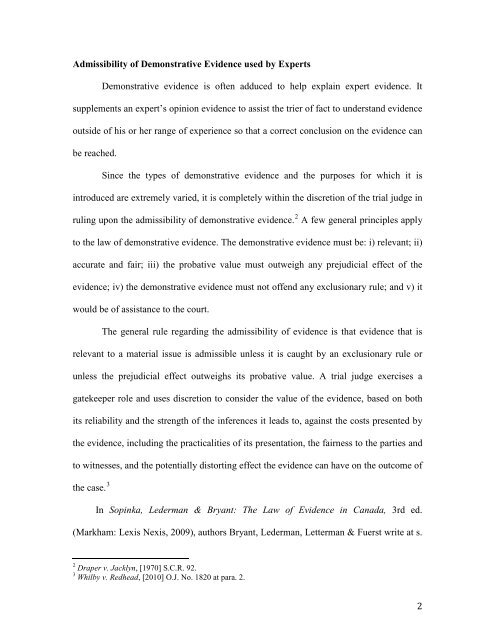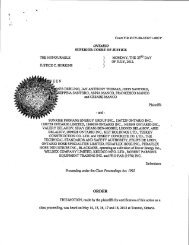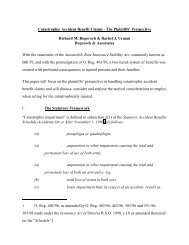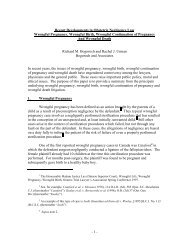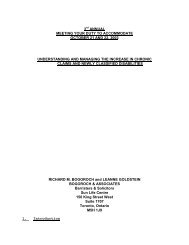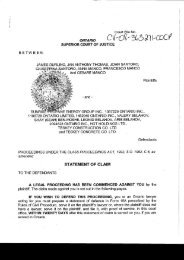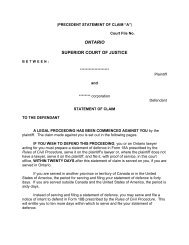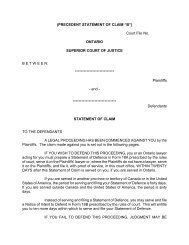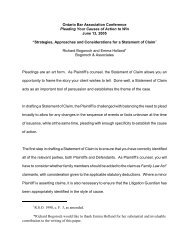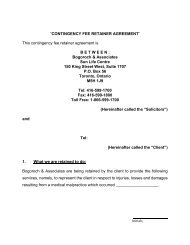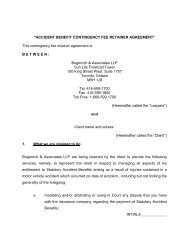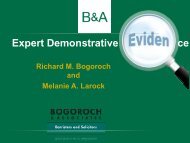Expert Demonstrative Evidence - Bogoroch & Associates
Expert Demonstrative Evidence - Bogoroch & Associates
Expert Demonstrative Evidence - Bogoroch & Associates
You also want an ePaper? Increase the reach of your titles
YUMPU automatically turns print PDFs into web optimized ePapers that Google loves.
Admissibility of <strong>Demonstrative</strong> <strong>Evidence</strong> used by <strong>Expert</strong>s<br />
<strong>Demonstrative</strong> evidence is often adduced to help explain expert evidence. It<br />
supplements an expert’s opinion evidence to assist the trier of fact to understand evidence<br />
outside of his or her range of experience so that a correct conclusion on the evidence can<br />
be reached.<br />
Since the types of demonstrative evidence and the purposes for which it is<br />
introduced are extremely varied, it is completely within the discretion of the trial judge in<br />
ruling upon the admissibility of demonstrative evidence. 2 A few general principles apply<br />
to the law of demonstrative evidence. The demonstrative evidence must be: i) relevant; ii)<br />
accurate and fair; iii) the probative value must outweigh any prejudicial effect of the<br />
evidence; iv) the demonstrative evidence must not offend any exclusionary rule; and v) it<br />
would be of assistance to the court.<br />
The general rule regarding the admissibility of evidence is that evidence that is<br />
relevant to a material issue is admissible unless it is caught by an exclusionary rule or<br />
unless the prejudicial effect outweighs its probative value. A trial judge exercises a<br />
gatekeeper role and uses discretion to consider the value of the evidence, based on both<br />
its reliability and the strength of the inferences it leads to, against the costs presented by<br />
the evidence, including the practicalities of its presentation, the fairness to the parties and<br />
to witnesses, and the potentially distorting effect the evidence can have on the outcome of<br />
the case.<br />
3<br />
In Sopinka, Lederman & Bryant: The Law of <strong>Evidence</strong> in Canada, 3rd ed.<br />
(Markham: Lexis Nexis, 2009), authors Bryant, Lederman, Letterman & Fuerst write at s.<br />
2 Draper v. Jacklyn, [1970] S.C.R. 92.<br />
3 Whilby v. Redhead, [2010] O.J. No. 1820 at para. 2.<br />
2


